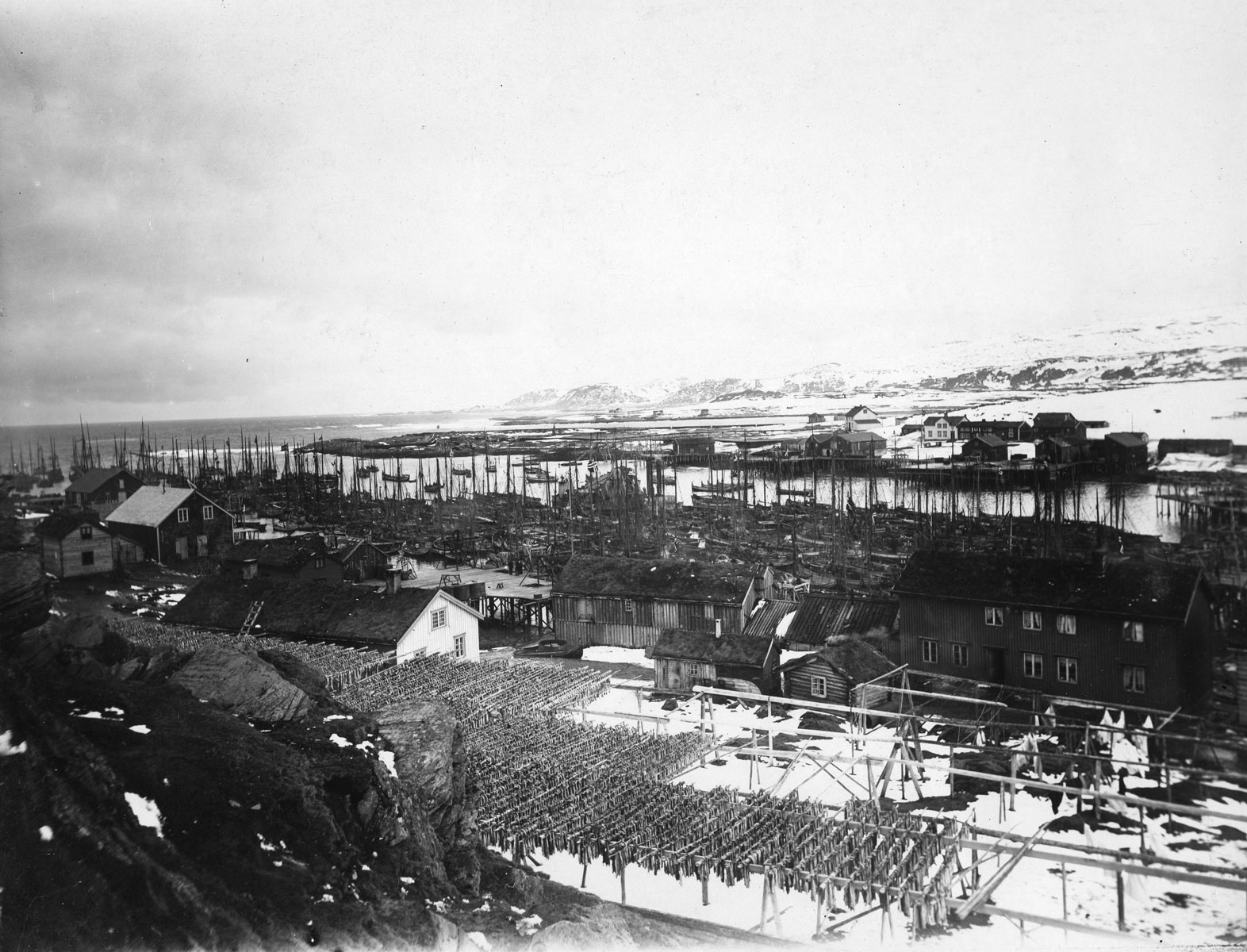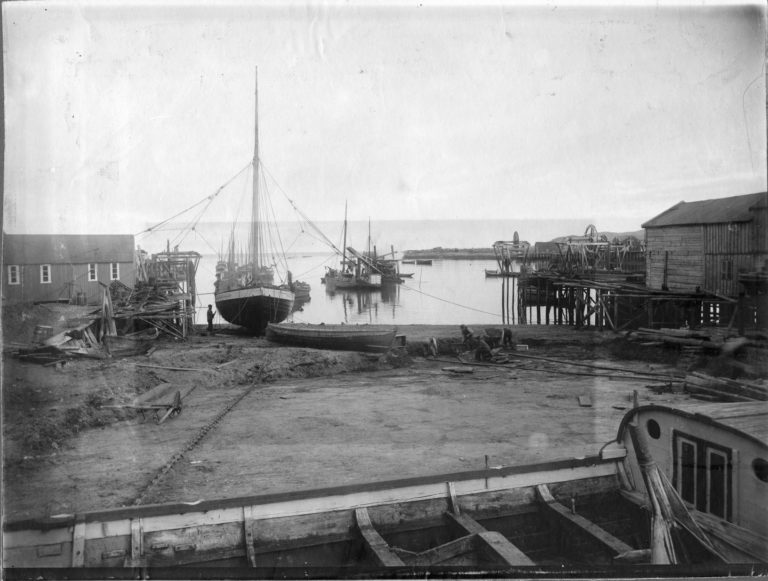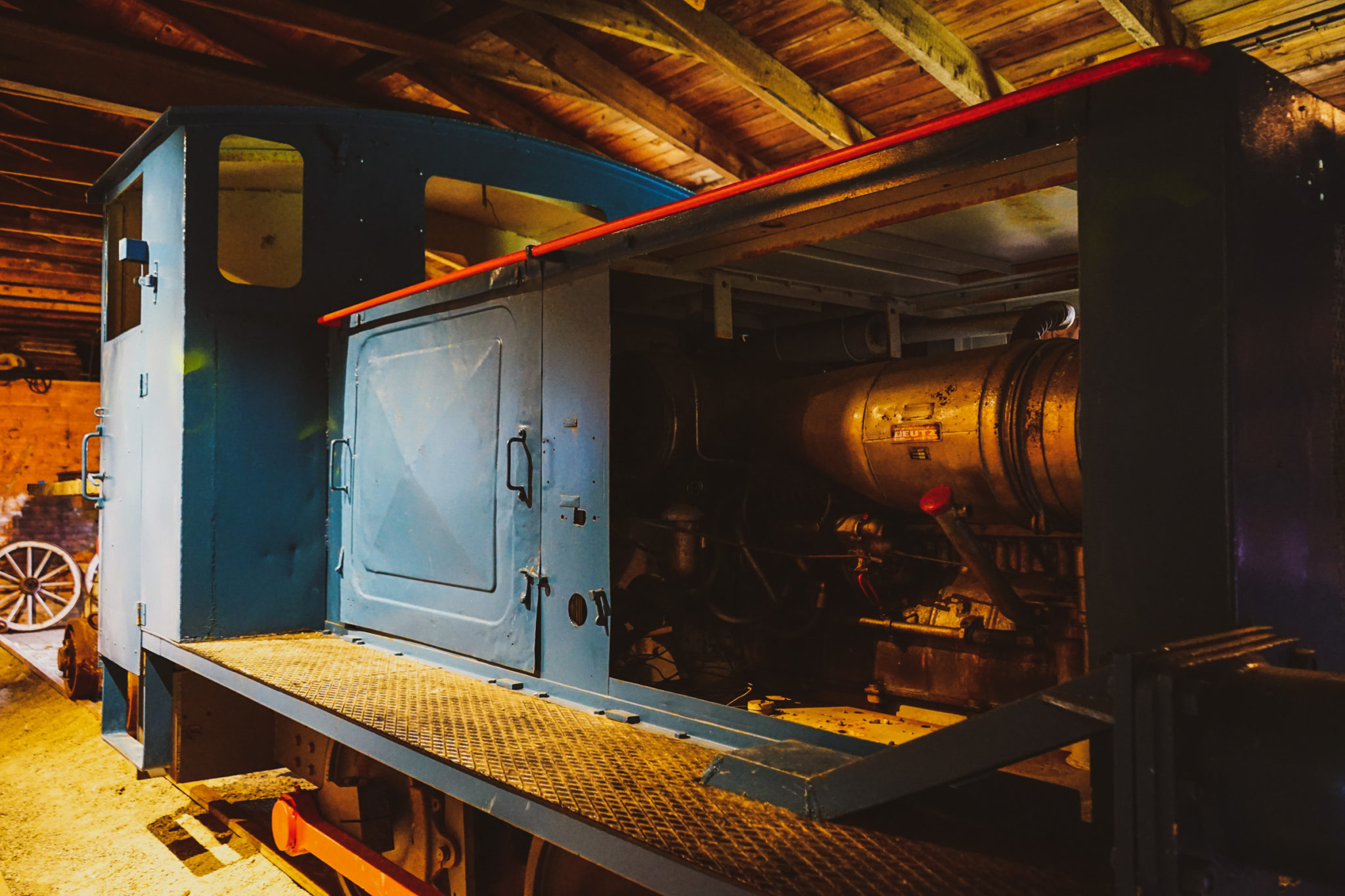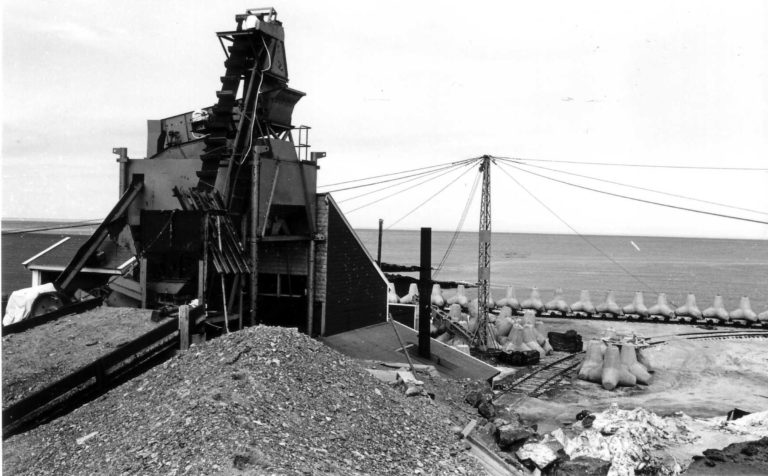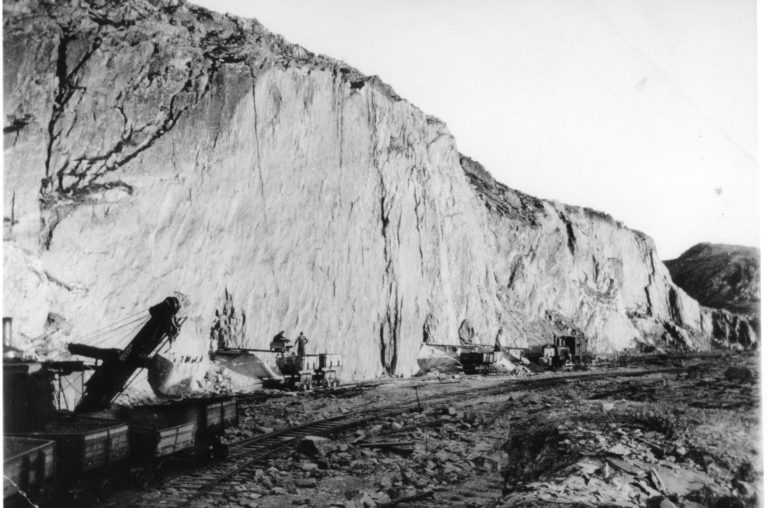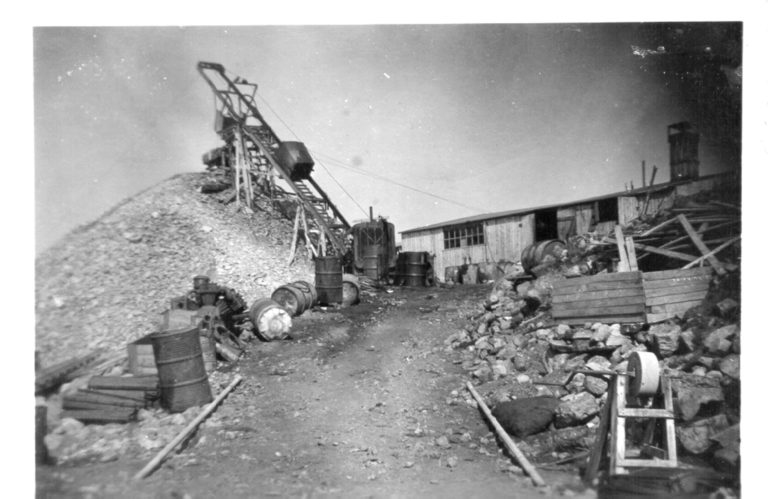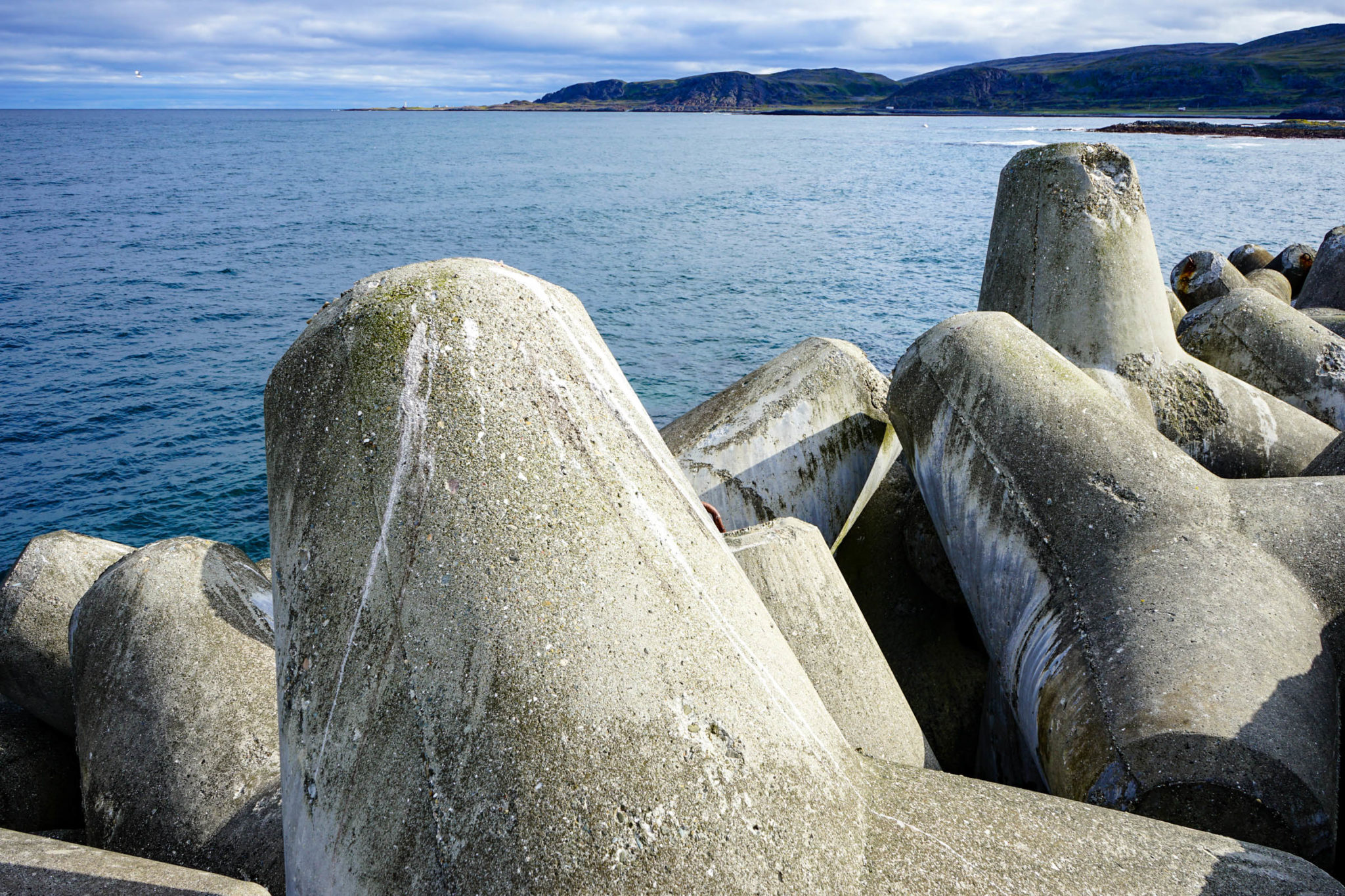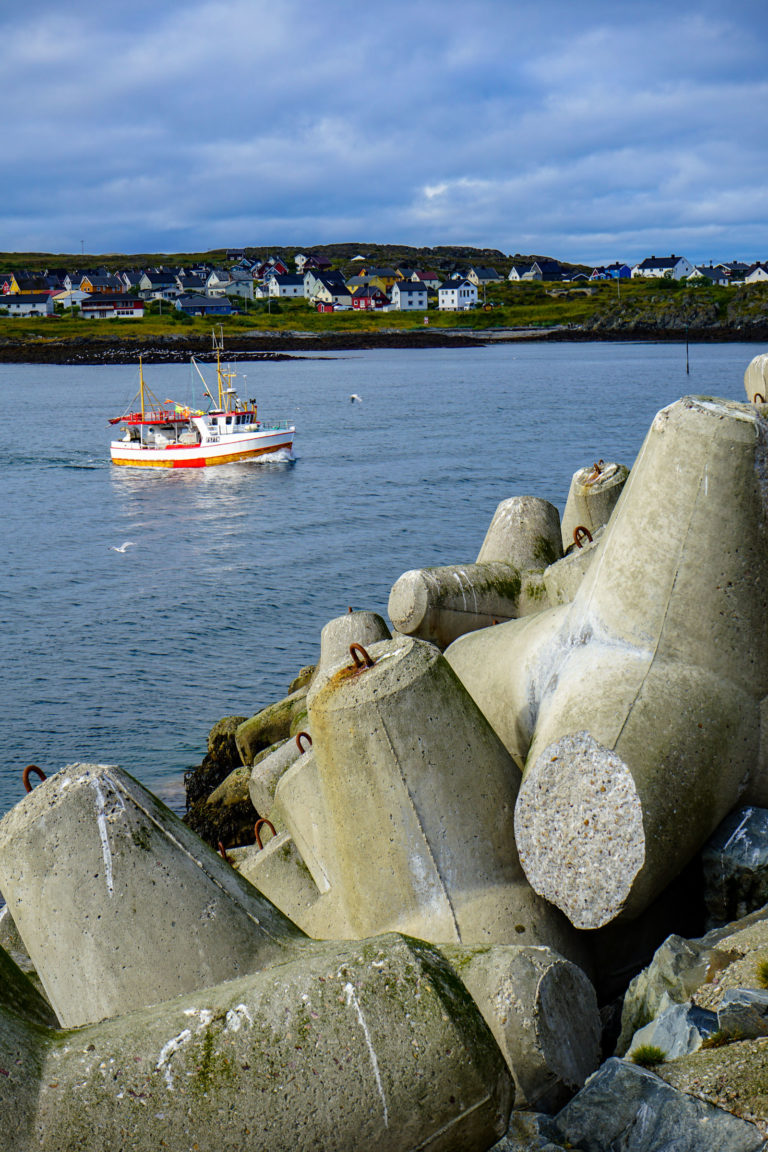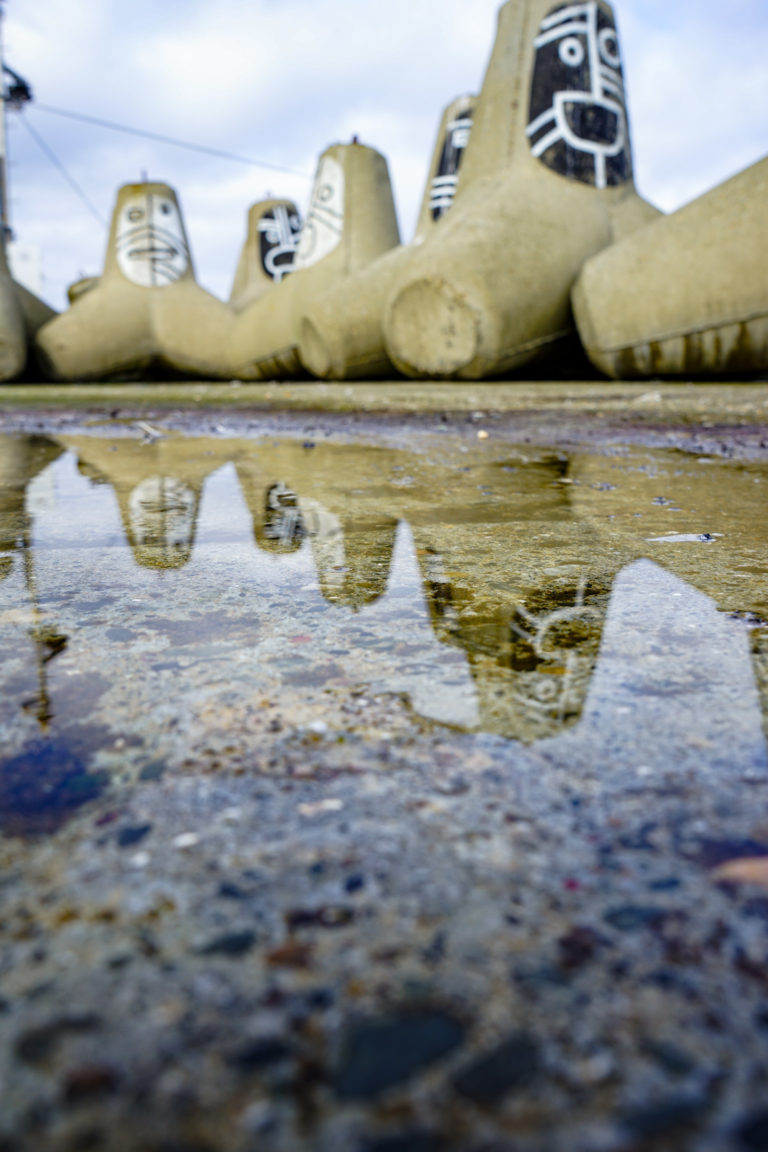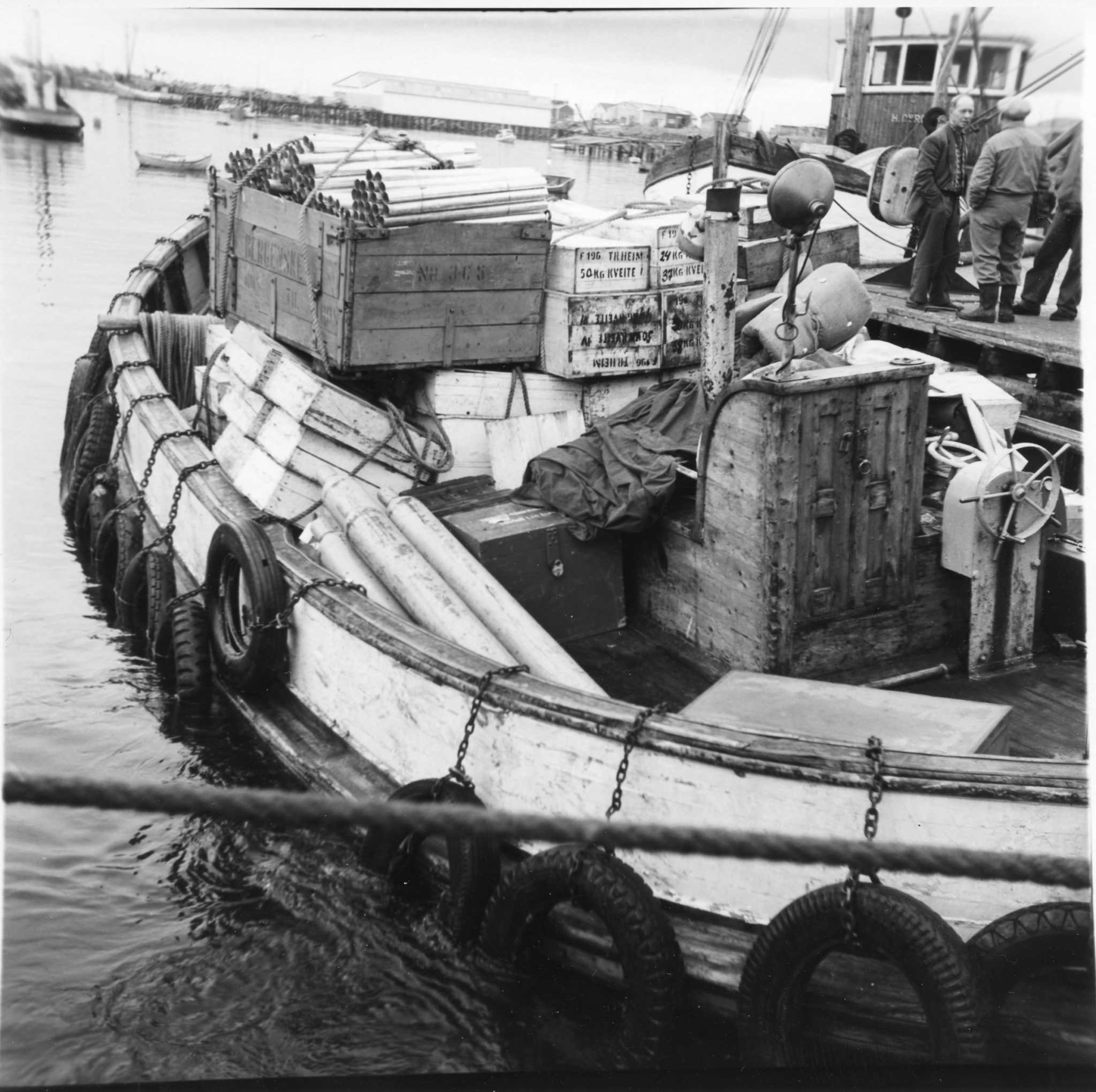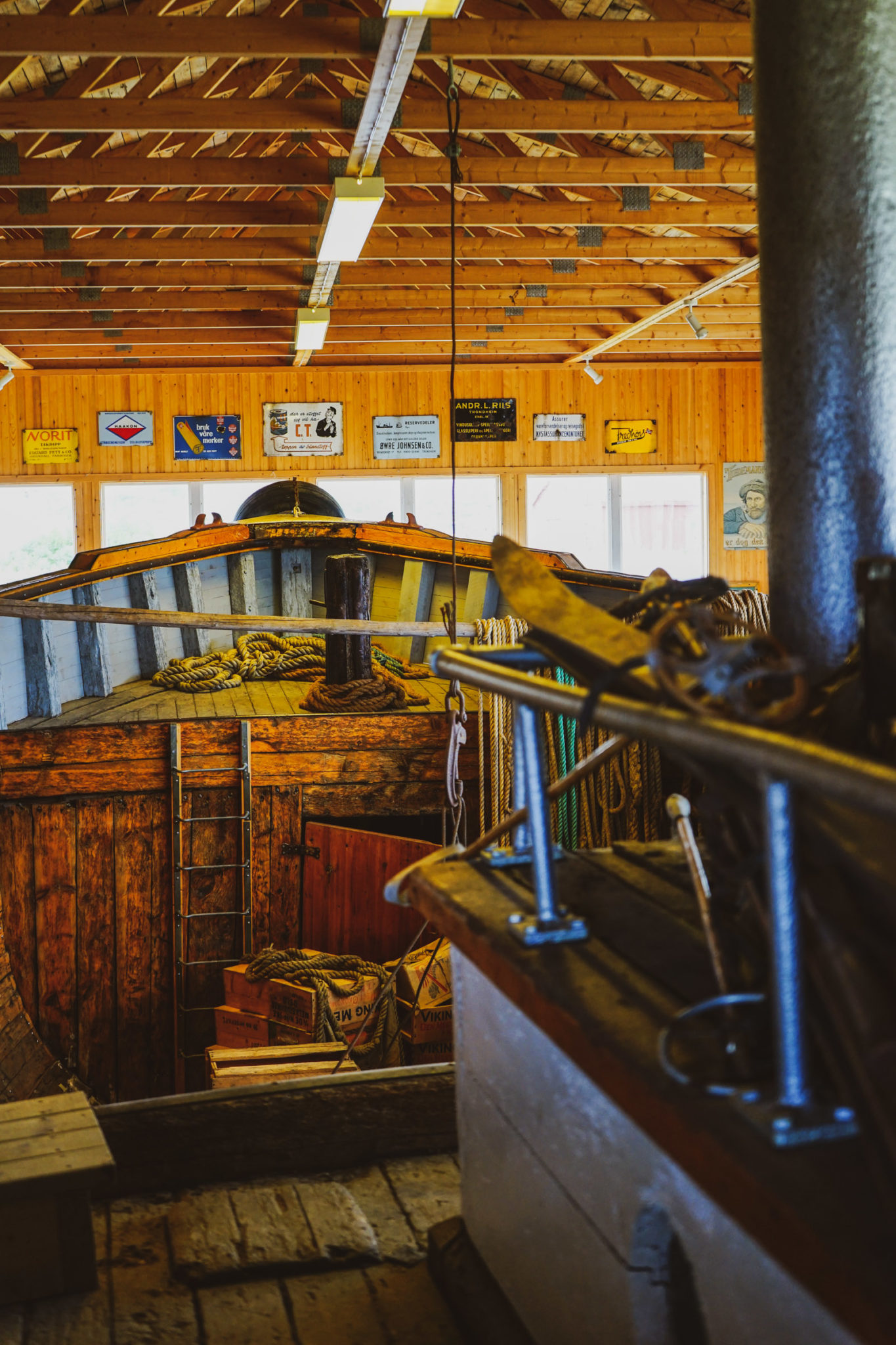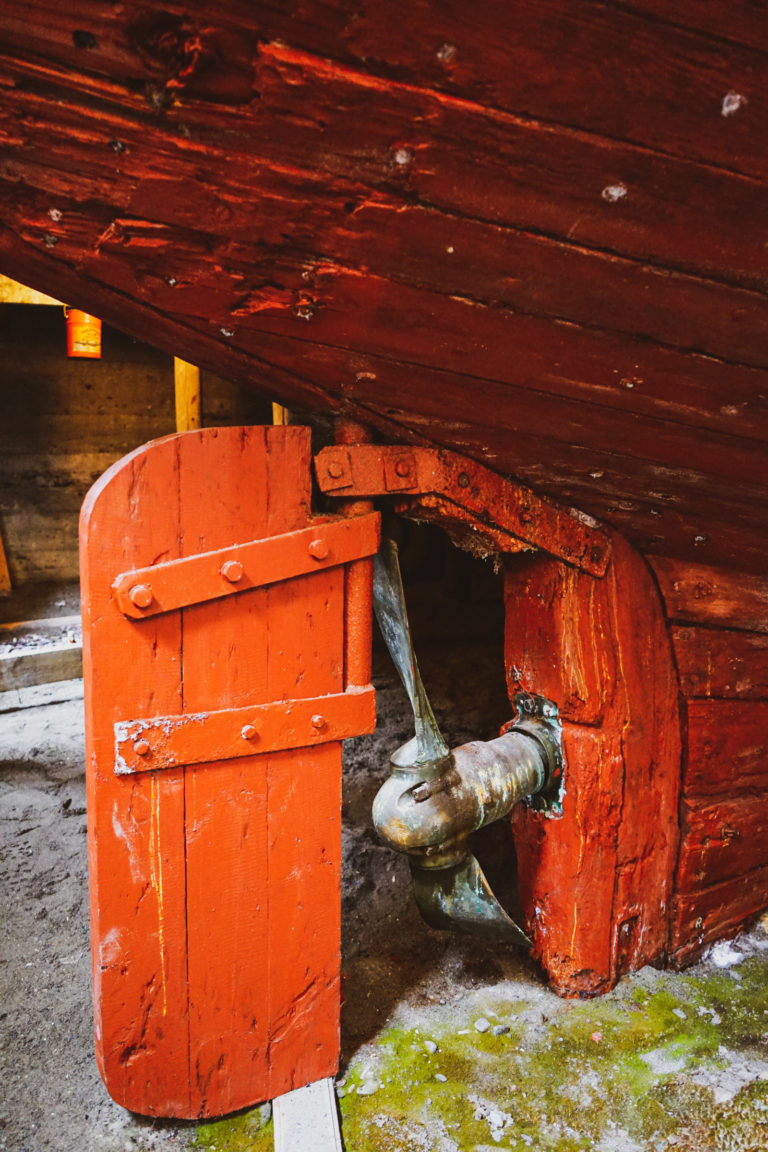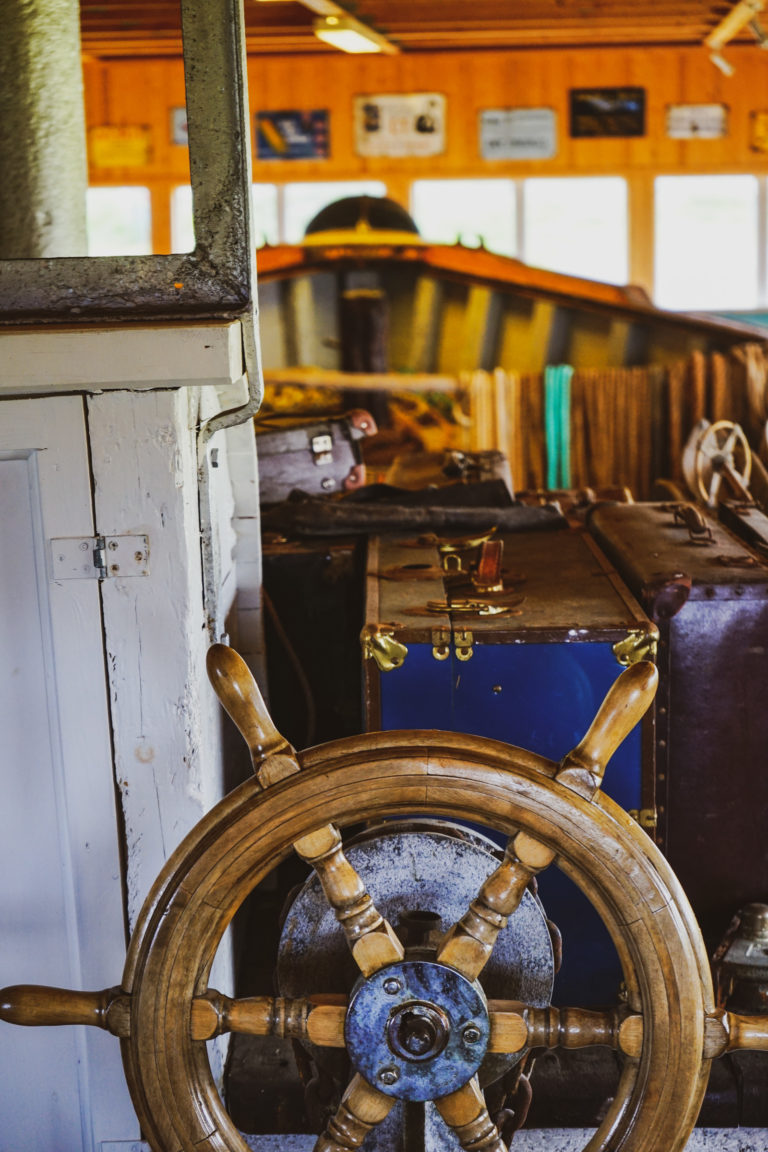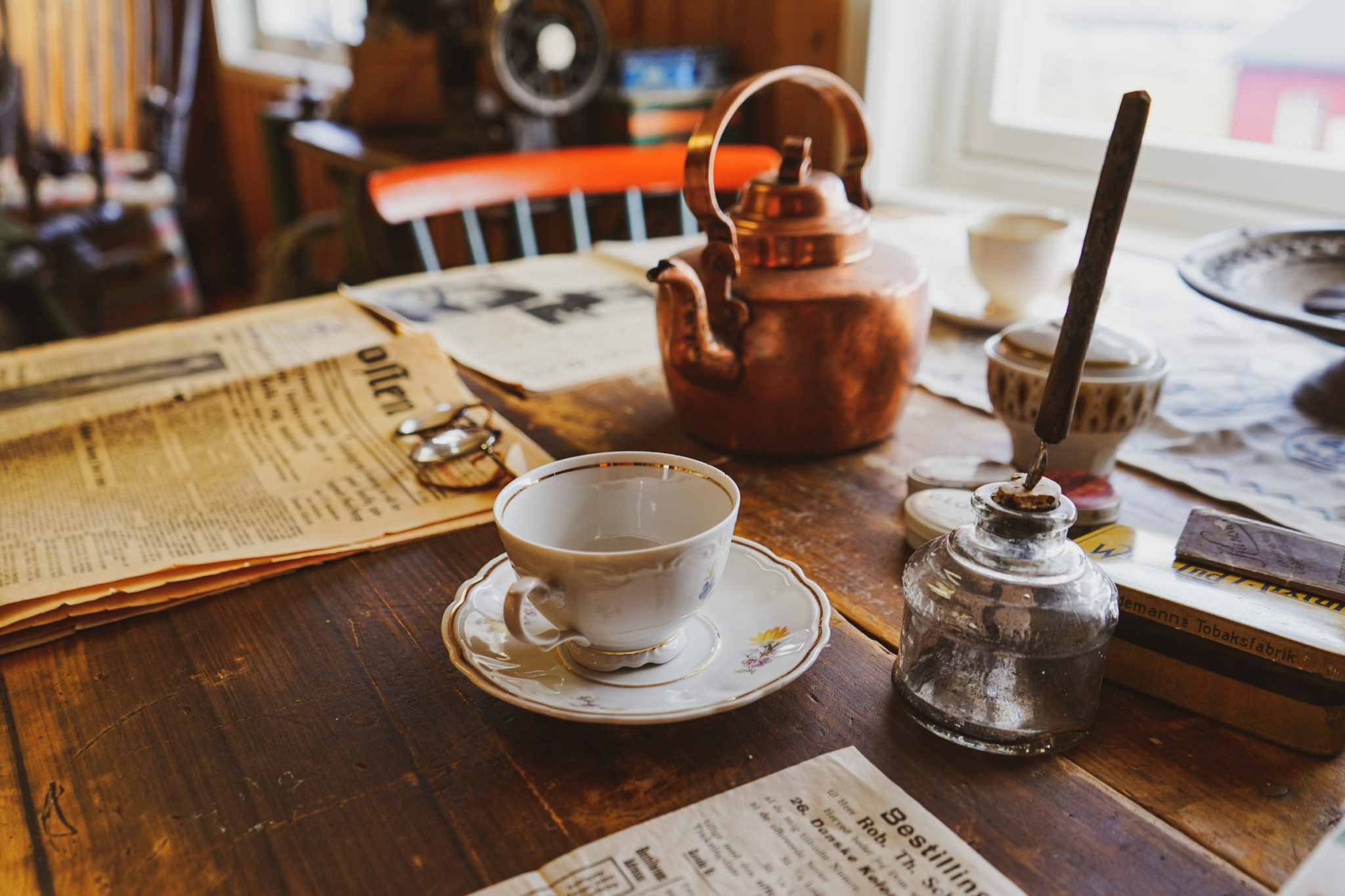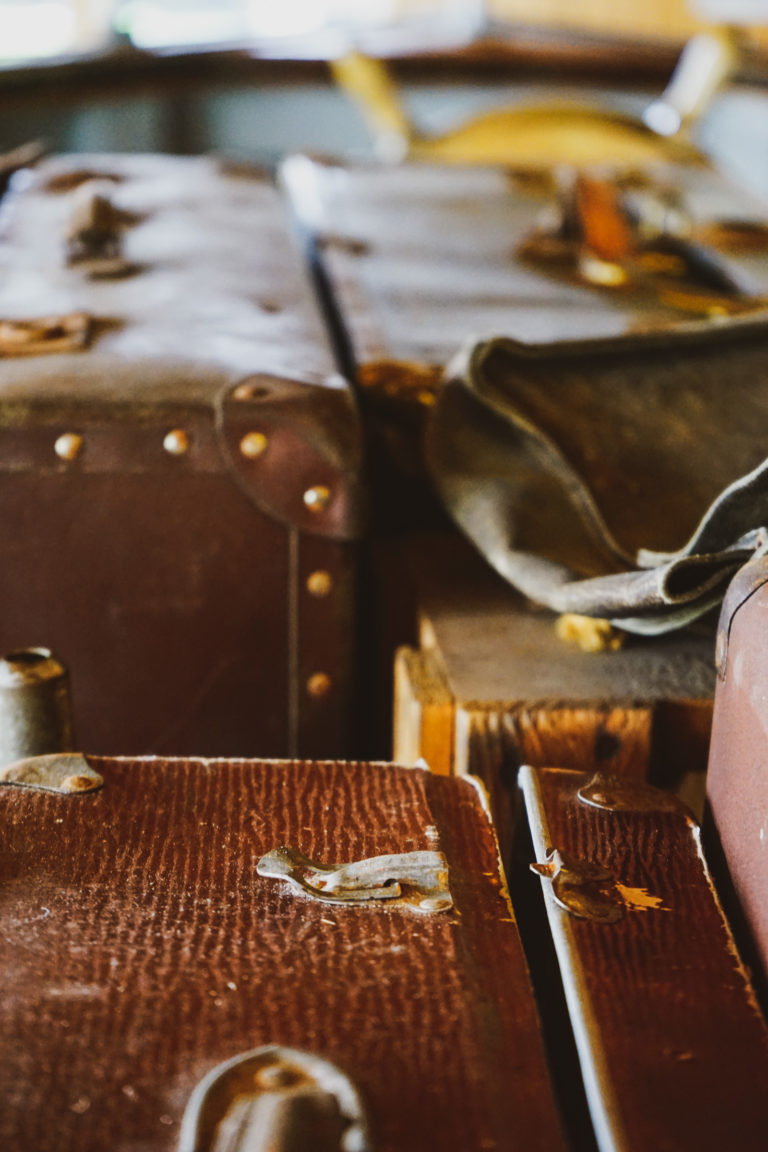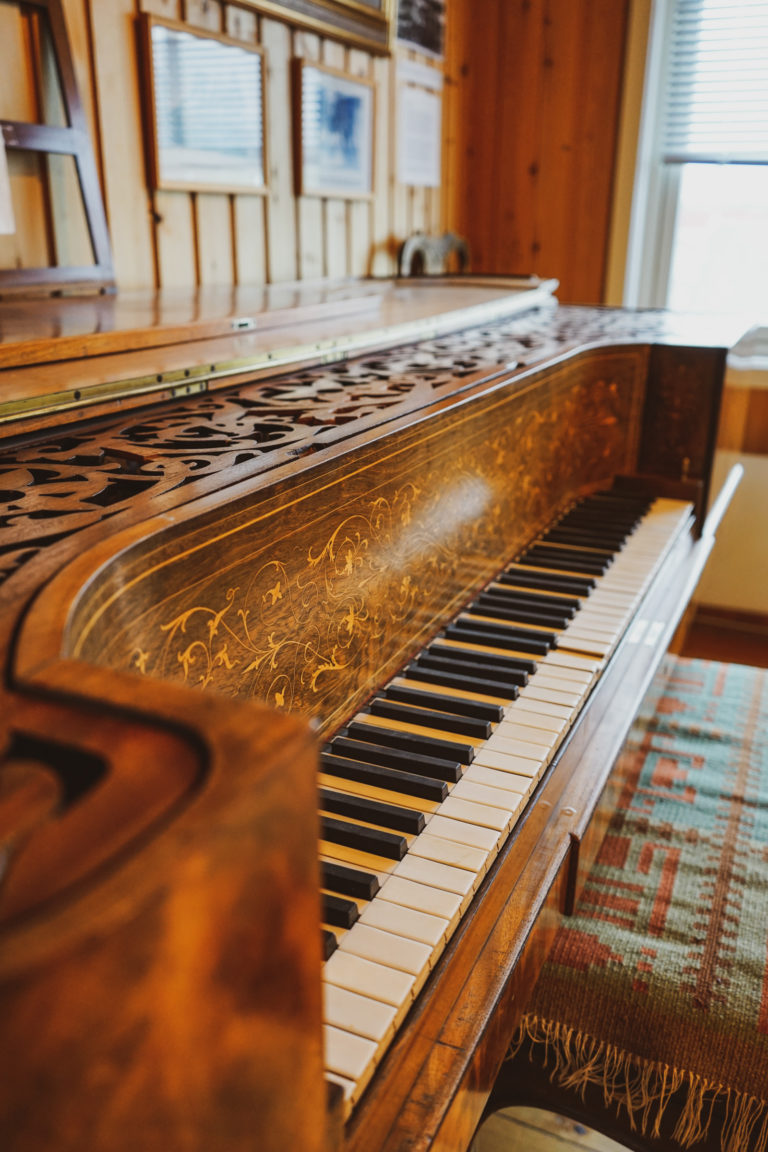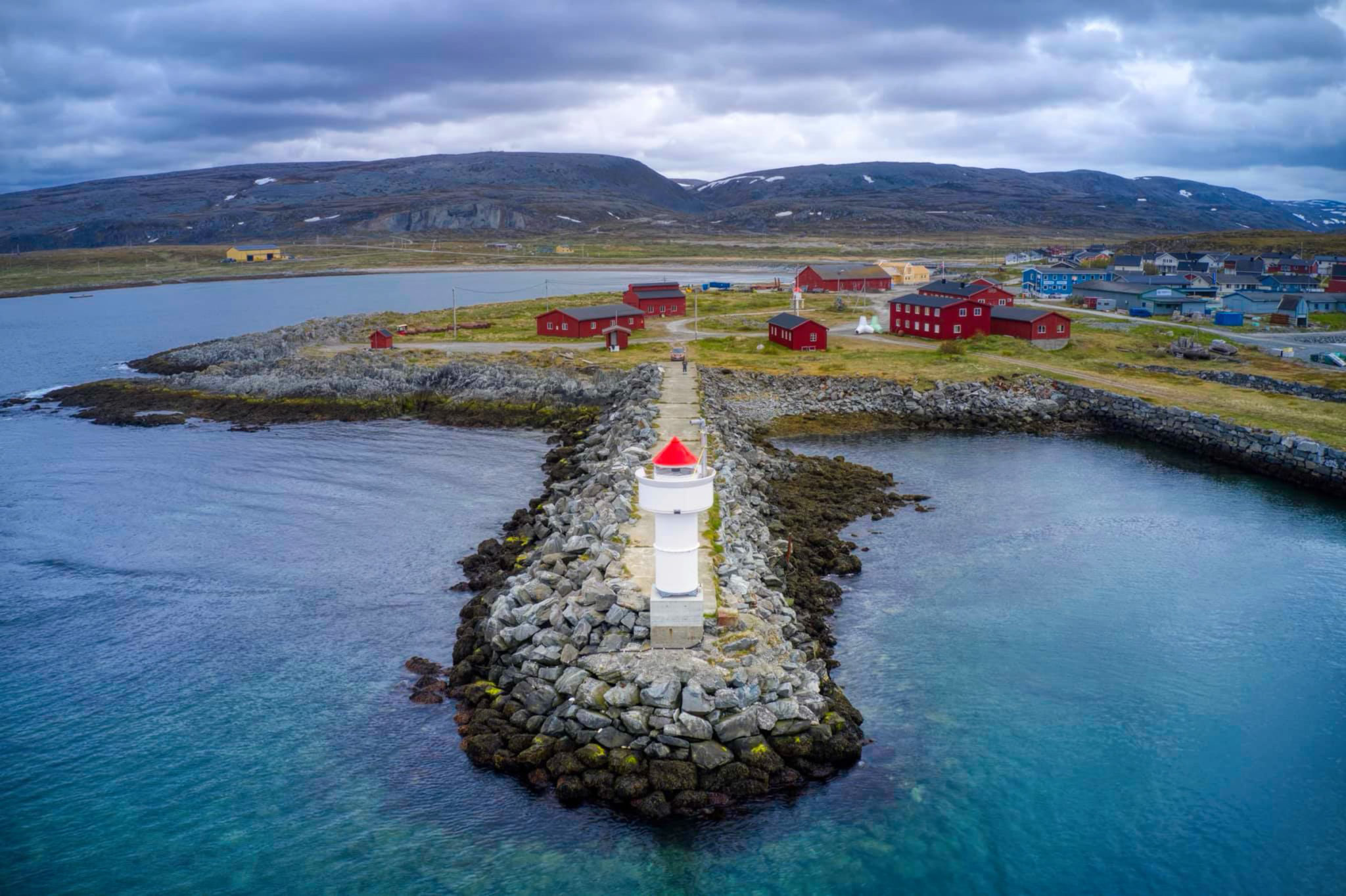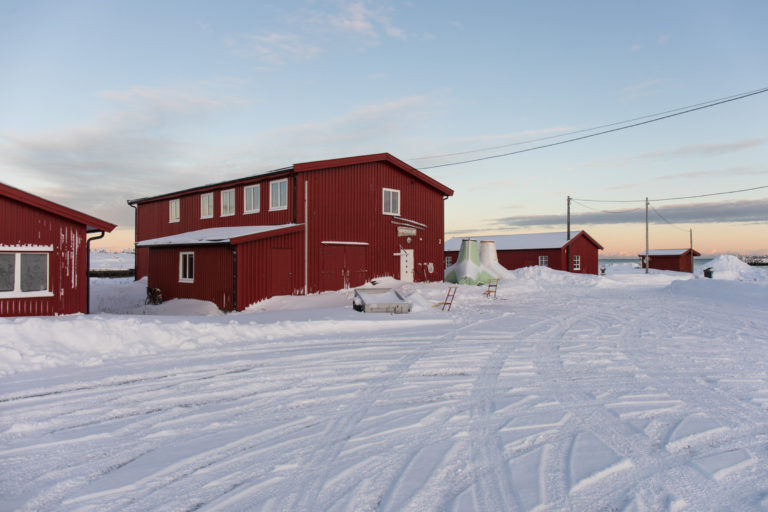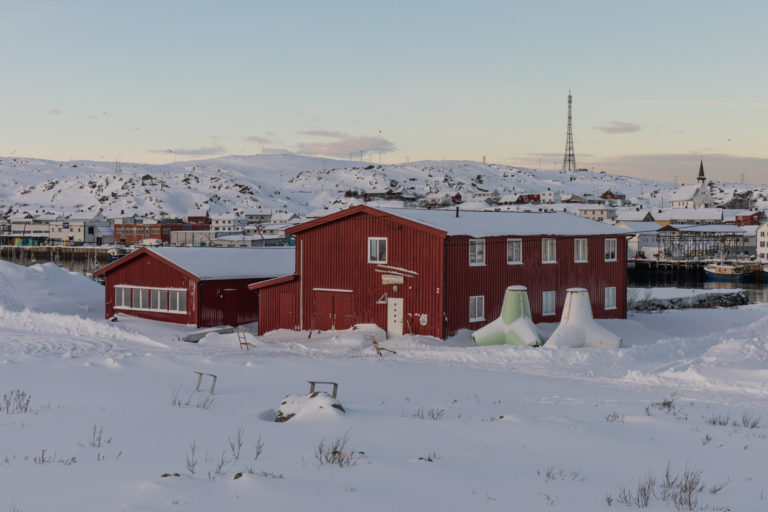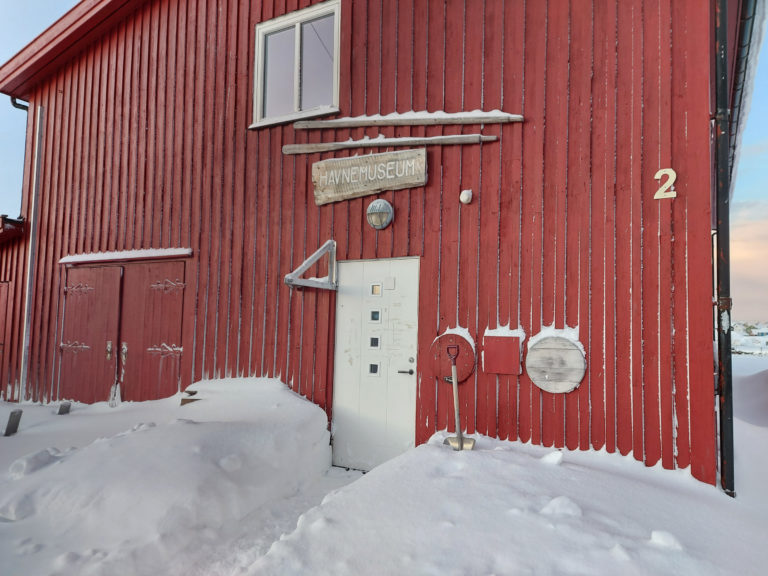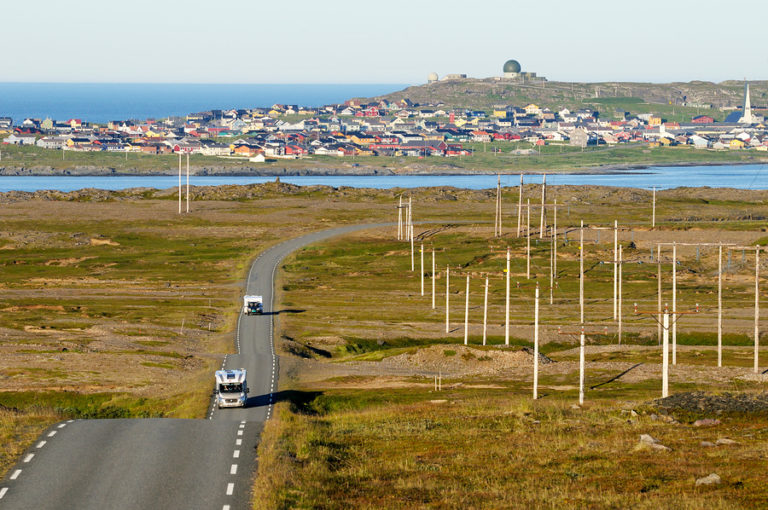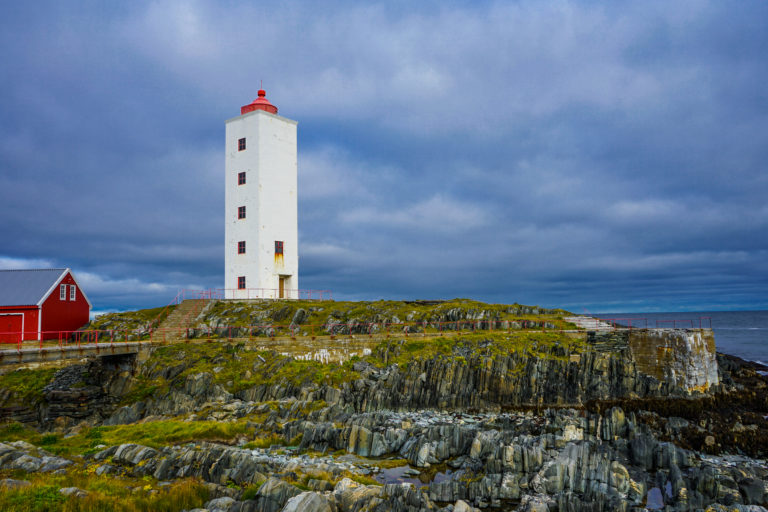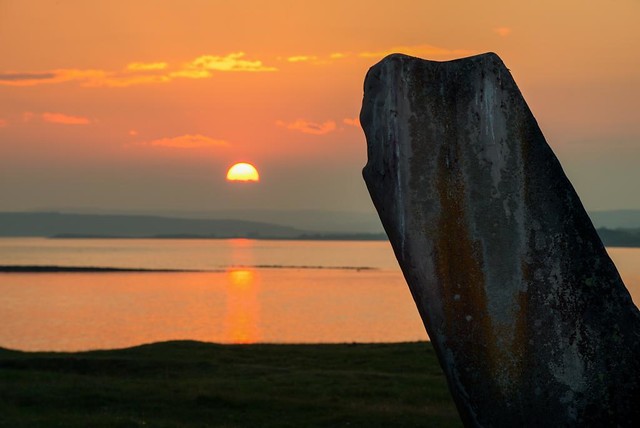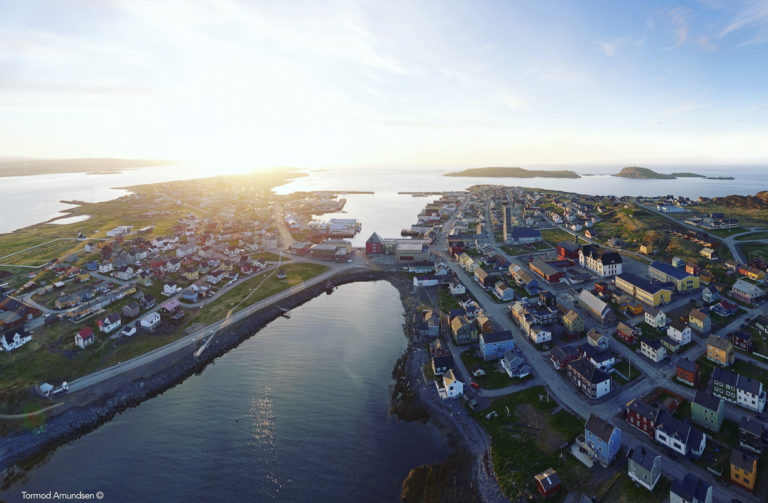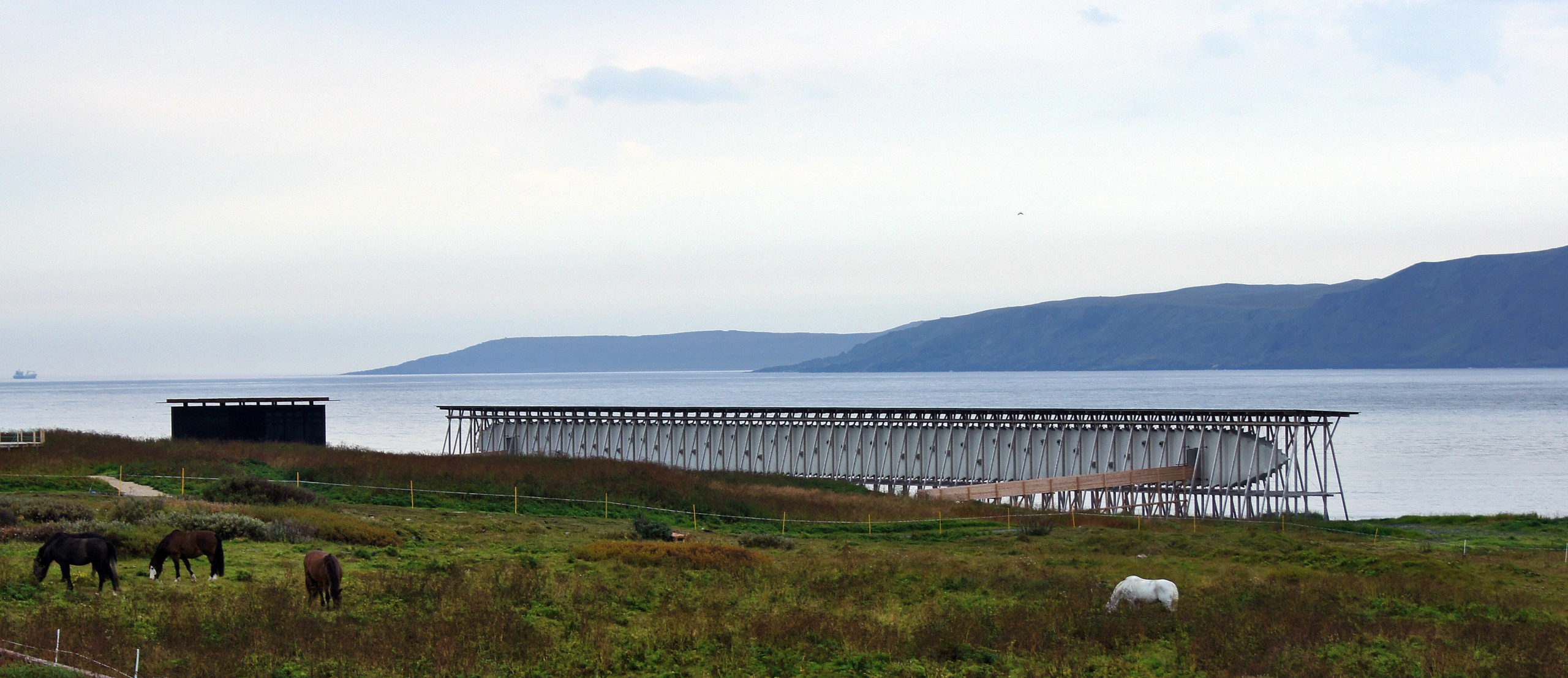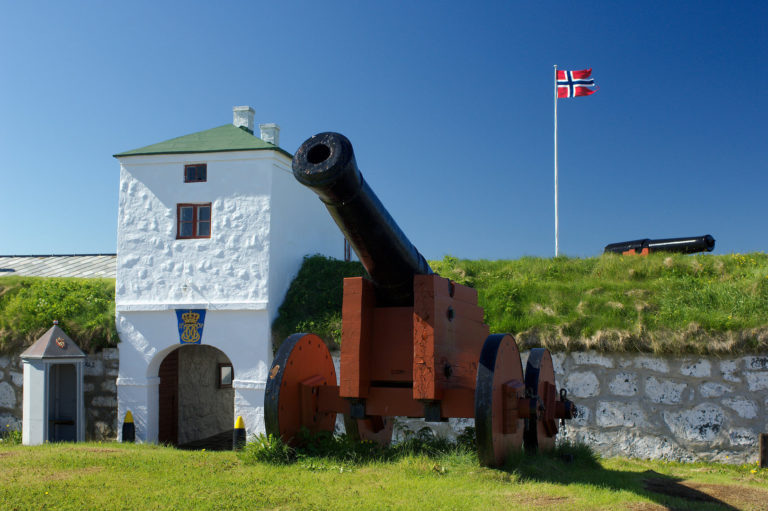In the far north, where the Barents Sea beats against a naked, barren coastline, the fishing village of Berlevåg sits on calm waters inside an enormous breakwater. This breakwater is the secret to Berlevåg’s existence – without it, Berlevåg would just be another abandoned community along Finnmark’s coast. The port museum in Berlevåg tells the full story.
Why build a fishing village where the harbour is this exposed?
Berlevåg is evidence of nature’s bounty. The landscape around the village may be barren, but the ocean is teeming with fish. As early as the Middle Ages, people flocked to the fishing villages on the Varanger peninsula, and from the mid-19th century, Berlevåg established itself as a prominent community. Berlevåg’s advantage was its location, on the edge of the Barents Sea. The fishermen, who relied on sails and oars, did not have to go far to reach the fishing grounds. When evening fell, their little boats were pulled up along the boat landings and into the boat houses, safe from the winter storms. Everything changed when boat engines became common, from around 1900. Boats needed a calm, protected harbour. Berlevåg was wide open to the north, and heavy storms could sweep the entire fishing fleet onto the rocky beaches. Something had to be done.
Constructing the first breakwater
In 1913, Parliament granted funds to build a breakwater in Berlevåg. Construction immediately began on Varnesmoloen – the breakwater on the eastern side. In 1920, construction began on Svartoksmoloen to the west, and together, these breakwaters were supposed to protect the harbour. In order to get enough rocks, they built a narrow-gauge railway from the quarry to the breakwaters. The tiny steam locomotive, reminiscent of a toy, is on display in the museum. The rock in Berlevåg is porous, however, and they struggled to find enough high-quality rock.
The sea takes revenge
During a heavy storm in 1932, a third of Svartoksmoloen collapsed into the sea. This setback brought construction to a stand-still. Then, in 1938, Parliament and Finnmark County agreed to resume construction. Following the German occupation in 1940, construction was once again put on hold, and in late 1944, Berlevåg burned to the ground when the Germans withdrew from Finnmark.
Back at it after the war
Eventually, construction resumed after the war. One hundred men were soon working hard on the project, and rough-hewn, large rocks were brought out onto Svartoksmoloen. The breakwater was being constructed as a rubble-mound, which means that workers would bring large rocks out and essentially dump them into the ocean.
Arrival of the tetrapods
The outer part of Svartoksmoloen collapsed again in 1959, after a massive storm. It became clear that the breakwater construction would not be able to withstand the wrath of the Barents Sea. Innovation was needed. The solution came in the form of a French patent that had previously only been used in the tropics – the tetrapod. The word ‘tetrapod’ means four-legged, and the structure is a four-legged concrete block. These are packed close together as an outer layer on the side of the breakwater facing the open sea. When the storm is raging, the legs of the tetrapod tangle with each other. They are able to move some as the waves crash over them, and water is able to penetrate the layer. This breaks up the enormous forces. They developed a special type of concrete intended for the cold climate, and the tetrapods were poured on site.
Completed breakwaters
Construction on Svartoksmoloen was completed in 1964, after 44 years of labour. They also retired the tiny little train. Refsnesmoloen was built during the period 1964–1974. In 1973, King Olav V opened the coastal express pier in Berlevåg. The harbour was now safe for the large coastal express ships, and the old “Pramma” – the expedition vessel for the open sea – was retired. Berlevåg had a safe harbour. In a park in Berlevåg, there is a tetrapod monument on a plinth – for those in the know, it speaks volumes about how Berlevåg persevered.
Crane operator describes how they worked
Crane operator Asbjørn Efraimsen described his workdays as follows: Conditions were rough. My buddy and I were working out on the breakwater, and the waves were nine metres high. We were 2–3 metres above the breakwater, and we had to count the waves to get down from the crane. There would be a break after every fourth wave, and we had to run really fast. The next wave often swept in before we managed, and then we got wet. The worst of it was that we had to stay in the cabin until low tide. We lit a fire in a tiny stove, because there was no electricity up there. We had to keep the fire going, and the cabin was ten metres above the sea. If you opened the door, the water would just come rushing in. We had to stay there until the waters calmed down at low tide. We couldn’t see anything, because the breakwater was under water. We were young and didn’t think anything of it, we just had a smoke and enjoyed the view.
The pull of the sea in Berlevåg had to be controlled
When something is unpredictable, random, unstable or unforeseeable, us northerners say it’s like the pull of the sea at Berlevåg. In certain conditions, the ocean waves against the opening in the breakwaters caused the famous pull of the sea, which meant considerable problems when entering the harbour. These problems were exacerbated by the modern fishing vessels being larger than the vessels of old, and they were only able to enter on high tide. The solution was a major operation, which involved dredging the harbour and making it deeper, and this work was completed in 1994–1995. This means Berlevåg is now a harbour capable of accommodating modern vessels, and it is just as close to the fishing grounds as it has ever been. Without construction of the breakwaters and the dredging of the harbour, Berlevåg would likely not have survived as a fishing village – there are plenty of fishing villages that did not survive the transition to modern fisheries.
Pramma is the museum’s greatest treasure
Pramma is set up in a separate building on the museum grounds. Pramma is the name for the old expedition vessel that used to serve the coastal express. It is a fairly round tub made of wood, with an afterdeck, a large, open cargo hold and a forecastle with a crane. You can walk along the side of the vessel and look into the hold, or you can take the stairs down to view it from below.
Passengers were swung on board the coastal express by crane
Under the midnight sun, on a calm summer’s eve with fair sea, Pramma would come alongside the coastal express, and passengers could take the few steps up a ladder, before receiving a helping hand up on deck. Sometimes, even choirs came out to entertain tourists during the short stay. In bad weather, on the other hand, passengers had to go down into the hold. Here, they were put into a box of sorts – made of steel and tarpaulins – three or four people at a time. This box was then lifted into the air by the crane and swung onto the forecastle of the coastal express. Boarding the coastal express this way, in the snow, sleet, darkness and heavy seas, must have been a nerve-wracking experience. Even so, as far as the museum has been able to determine, there were no serious accidents.
Kristian got a bruised arm
We were lucky enough to have Kristian Møller stopping by the museum when we were there. The 82-year-old Berlevåg local did, of course, go out on Pramma in its hayday. Once, he was put into the box with three women, in gale-force winds and heavy seas. “When they lifted us up, the deck of Pramma came up and slammed into us,” he says. “One of the women grabbed my arm so hard that it left a large bruise that did not go away for days.” We can only imagine how relieved people were when the pier for the coastal express was completed.
Treasures from old Berleåg – all in one place
When you visit the harbour museum in Berlevåg, they put on a short film for you, showing the history of the harbour. You are seated in old chairs, like an old-fashioned living room. All around you are old photographs and knick-knacks – there is an old organ on one wall. The next room is a small kitchen, filled with old kitchen objects, such as sugar nips. There is also a copy of “Alle kvinner” magazine from 1939, with lots of beauty tips. These are things many of us have seen in our grandparents’ home, or in vintage shops. But then you realize – Berlevåg was completely razed in November 1944, there was hardly a single building left standing. Many of the locals had time to bury objects and furniture, however. As time has passed, many of these objects have been donated to the museum, like little treasures from old Berlevåg, lost forever. It is quite moving to read the little notes donors have written.
The harbour museum tells the story of Berlevåg
The harbour museum is a rich and varied local history museum. Learn about the first people who settled here 11,500 years ago, and there are plenty of photos from the thriving fishing village from the late 19th century up to the war. There are even some photographs taken by German soldiers. Behind the large wharfs in the usual Northern Norwegian style, there is an idyllic fishing village with wooden houses. We learn about traditional fishing from small boats, about cutting ice to preserve the fish, and how to dress to stay warm. Slowly, we move through time, into the modern fisheries industry and filleting factories.
World War II destroyed Berlevåg
Some of the pathways between the different museum buildings are made from rough boards. These are railroad sleepers, and they were used as the surface of a tiny airstrip the German forces built right outside Berlevåg. The front against the Soviets lay just each of Kirkenes, so there were plenty of ships coming in and many German soldiers in the village. In the autumn of 1944, however, the German war effort stalled, and the Soviets moved into Kirkenes and further west. The German strategy was to leave nothing for the Red Army; they were intent on destroying everything. They were pressed for time in Eastern Finnmark, however, and many fishing villages and settlements were left untouched. Berlevåg had no suck luck; only a couple of buildings were left standing in November 1944.
Kristian shared his story
As we said, we were lucky to meet Kristian Møller, born in 1940, at the museum. He told us he remembered bits and pieces from the war. We are sure the events of the war left a big impression on a child. His mother, Dagny Loe, was held prisoner by the Germans, and she features heavily in the exhibits. His adoptive parents and some other neighbours sought refuge in a hut by the coast, around eight kilometres from Berlevåg. 24 people stayed there for a week, before they returned to a burned-out Berlevåg. A boat later came from Båtsfjord to rescue them. Båtsfjord was not burned, and the population increased from 600 to more than double that due to the influx of people from near and far who had lost their homes. The small family lived in the attic of a so-called egnarbu, a shed used for mending fishing nets, until 1946. They returned to Berlevåg, where they stayed in barracks until they were able to get a modern house. His mother returned from German captivity in the summer of 1945.
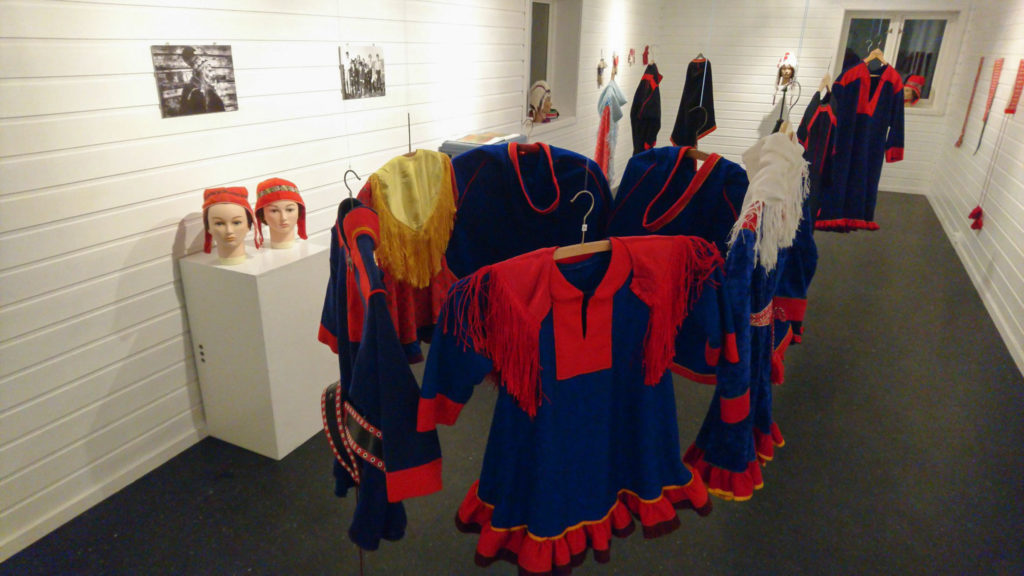
The harbour museum in Berlevåg is a personal and moving experience
The fishing village at Berlevåg makes a strong impression, with its colourful reconstructed houses inside the massive breakwaters. The harbour museum is located in the works buildings from when the breakwaters were constructed, in the centre of Berlevåg. We recommend starting your visit in Berlevåg at the museum. Pick up a folder about a hiking trail through the area where the old railroad was. Wind and weather permitting, we also recommend venturing out onto the impressive breakwaters.
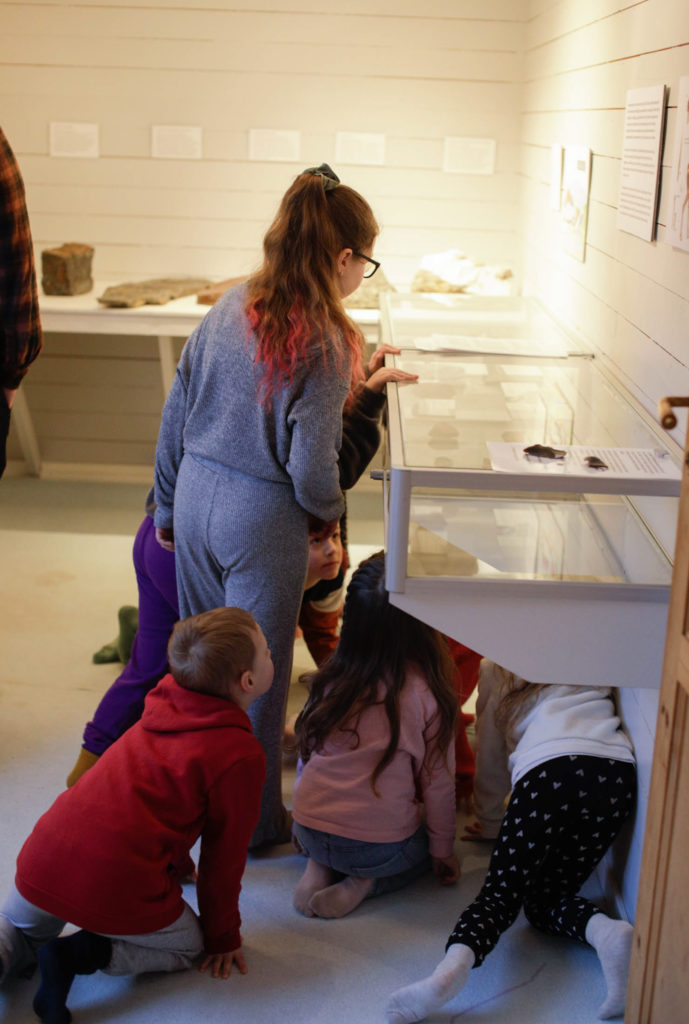
Wondering about Berlevåg
Berlevåg is found on the northwestern side of the Varangerhalvøya peninsula in Norway’s far northeast
Widerøe flies to Berlevåg with propeller planes. You can often start in Tromsø or Hammerfest in the west, or from Kirkenes in the east. Hurtigruten, today often referred to as the Coastal Route, calls at Berlevåg heading south and north. Depending on the day of the week, the companies Hurtigruten or Havila are responsible. From Kirkenes and Tana bru there is a bus to Berlevåg a few times a week. Consult Snelandia for the details.
The Berlevåg Harbour Museum is found in the middle of the village in Berlevåg, and is easily reachable on foot from any accommodation in this fishing village. If you come in by car, take a right after having entered the village. It is signposted.
The Harbour Museum is open all year, Monday to Friday. Consult their home page for more info.
Berlevåg has no major hotel, but a motel, campsite and a pension. In Kongsfjord, half an hour away, there is accommodation too. We strongly recommend prebooking.
